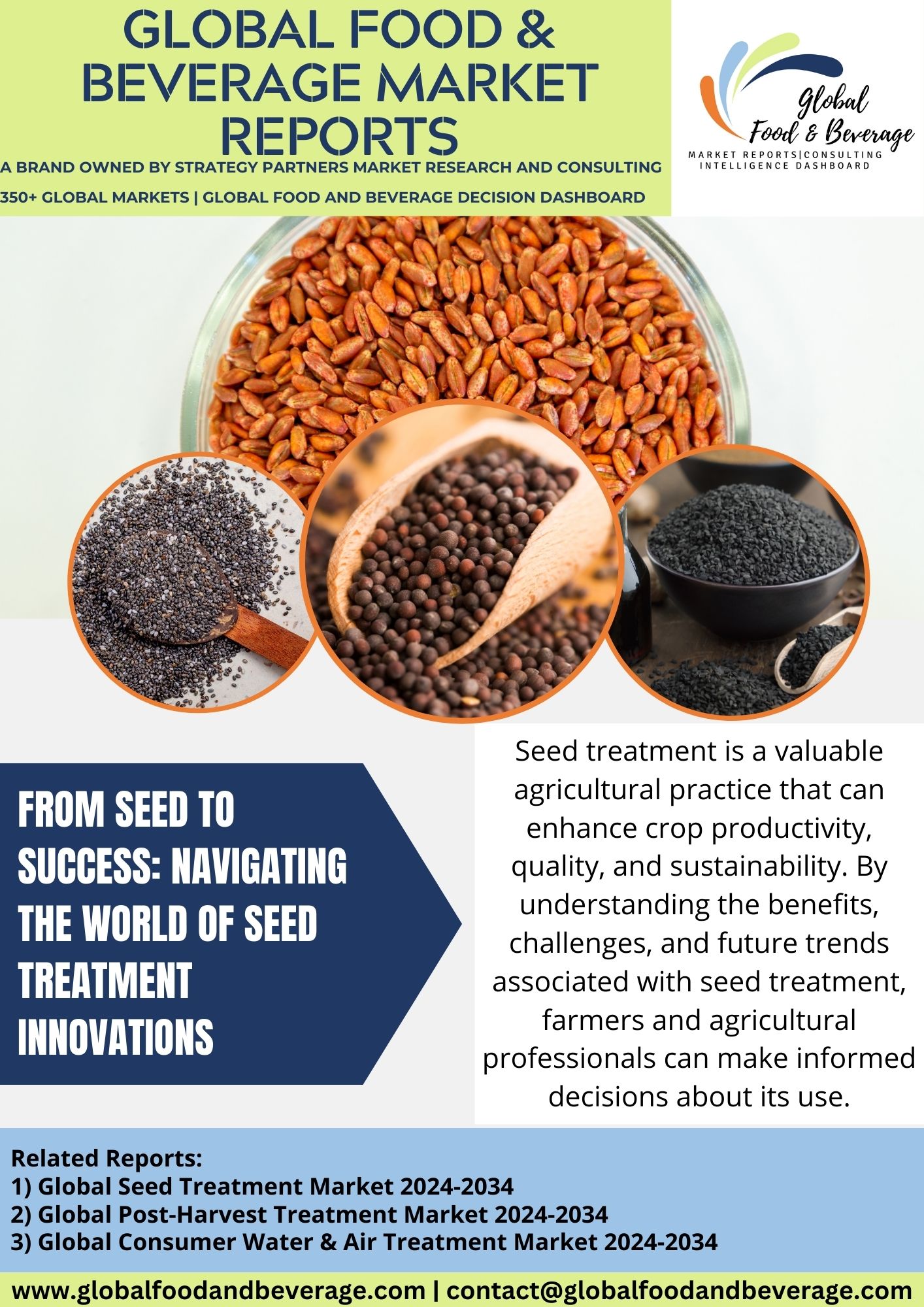Seed treatment is a crucial agricultural practice that involves applying various treatments to seeds before planting to enhance their performance, protect against diseases, and promote optimal germination and early seedling development. This practice is integral to modern agriculture, contributing to improved crop yields, pest resistance, and overall crop health.
One common seed treatment is the application of fungicides to protect seeds against soil-borne pathogens and fungal diseases. Fungal infections can severely impact germination and early seedling growth, leading to poor crop establishment. Seed treatments with fungicides create a protective barrier around the seed, preventing the onset of diseases and ensuring a healthier start for the crop.
In addition to fungicides, insecticides are often used in seed treatments to safeguard against insect pests that can damage seeds or seedlings. Protecting seeds from early insect damage is critical for establishing a strong and healthy crop stand, especially in the early stages of growth when plants are most vulnerable.
Seed treatments may also include the application of biological agents such as beneficial bacteria or mycorrhizal fungi. These microorganisms form symbiotic relationships with the plant roots, enhancing nutrient uptake and improving the plant’s resilience to environmental stress. This biological approach to seed treatment aligns with sustainable agricultural practices that aim to reduce reliance on chemical inputs.
Seed treatments may be applied as coatings, dressings, or pelleting, ensuring uniform distribution of the treatment on each seed. The development of precision application technologies has allowed for more efficient and targeted seed treatments, minimizing waste and maximizing the effectiveness of the applied treatments.
Advancements in seed treatment technologies continue to play a vital role in addressing challenges faced by modern agriculture, including emerging diseases, changing climate conditions, and the need for sustainable and environmentally friendly practices. As a result, seed treatment has become an essential component of integrated pest management and crop protection strategies, contributing to the overall success and sustainability of global agriculture.
ADVANCEMENT:
Advancements in seed treatment technologies have significantly impacted modern agriculture, optimizing crop performance, and ensuring sustainable and efficient food production. One key area of progress is the development of precision application methods, allowing for targeted delivery of seed treatments. This enhances the efficacy of pest control, disease prevention, and nutrient application while minimizing environmental impact.
Innovations in seed coating materials and formulations contribute to improved seed treatments. Coatings designed to enhance germination, protect against environmental stress, and promote early seedling development are becoming more sophisticated. These advancements result in higher crop yields and improved resilience under diverse growing conditions.
Biological seed treatments have gained prominence, harnessing the power of beneficial microorganisms to enhance plant health and suppress diseases. This eco-friendly approach reduces reliance on chemical inputs and aligns with sustainable agriculture practices.
Furthermore, the integration of digital technologies and data analytics in seed treatment processes allows for real-time monitoring and precise decision-making. Farmers can optimize treatment plans based on local conditions, ensuring resource-efficient and customized approaches.
The development of genetically modified seeds with built-in resistance to pests and diseases represents another breakthrough in seed treatment. These genetically engineered traits contribute to crop protection and increased productivity, addressing challenges in global food security.
In summary, advancements in seed treatment technologies encompass a spectrum of innovations, from precision application methods and advanced coatings to biological treatments and genetic modifications. These developments contribute to the evolution of more resilient, sustainable, and productive agricultural systems.
CHALLENGE:
Seed treatment, a critical aspect of modern agriculture involving the application of various chemicals to seeds before planting, faces several challenges in the global agricultural industry. One significant challenge is the need for effective pest and disease control while minimizing environmental impact. Striking a balance between protecting crops from pests and diseases and ensuring the sustainability of seed treatment practices is a continuous challenge. This includes addressing concerns related to the use of certain chemicals and their potential effects on non-target organisms and ecosystems.
Regulatory compliance and evolving standards pose challenges. Different regions have varying regulations regarding the approval and use of seed treatment chemicals. Navigating these diverse standards requires seed treatment manufacturers to invest in compliance expertise to ensure market access and adherence to evolving environmental and safety standards.
Resistance management is a growing concern. Pests and pathogens can develop resistance to seed treatment chemicals over time. Developing effective strategies to manage resistance, such as rotating or combining different active ingredients, is a significant challenge for maintaining the efficacy of seed treatments.
Technological advancements and innovation are critical for success. Developing new and more targeted seed treatment formulations, exploring alternative active ingredients, and incorporating precision agriculture technologies are essential for overcoming the challenges associated with seed treatment.
Public perception and education are ongoing hurdles. Concerns about the environmental impact of agricultural practices, including seed treatment, require effective communication and education to build trust with consumers and regulatory bodies. Demonstrating the safety and benefits of seed treatment technologies is crucial for industry acceptance.
CONCLUSION:
In conclusion, the seed treatment market is witnessing robust growth, driven by the increasing emphasis on sustainable agriculture and the need for enhanced crop yields. Seed treatment technologies, including fungicides, insecticides, and bio-stimulants, play a pivotal role in safeguarding seeds and optimizing plant performance. The industry’s focus on precision agriculture, coupled with advancements in seed coating technologies, contributes to market expansion. As global food demand rises, seed treatment becomes integral to modern farming practices. With ongoing research and innovation, the market offers significant opportunities for stakeholders to address evolving challenges, ensuring efficient and environmentally conscious seed treatments for sustainable agricultural practices worldwide.
